I love my Surly Pugsley and I have considered building up a 29er set of wheels for it a few times over the years. The Pugsley has a 17.5mm offset of the rear wheel to the right so the chain clears the big fat tire. That works great with the wider fat rims out there as they have enough real estate to offset the hole over to the right so that the end result is a strong wheel with reasonably even spoke tension on both sides. My Large Marge rims [shown below] have the spokes offset ~13mm to the right for example.

Note offset spokes…
With narrower 29er rims you can’t move the spoke holes over as much so there are some compromises to be made that are worth looking at.
What’s normal?

Standard rear MTB wheel…
I like strong wheels with even spoke tension, but most mountain bikes roll along just fine on rear wheels that are tensioned at 100%/60%. So that’s worth keeping in mind.
Offset Fork + Zero Offset Rims

Zero offset rim in the rear of the Pug…
If you build a Pugsley a set of 29er wheels using standard zero offset MTB rims [spoke holes centred in the rim] you get the spoke tension shown in the images above and below.
The rear wheel uses a SRAM X9 hub and the spoke tension is 100%/45%.
The front wheel uses a Surly 135mm SS hub in the Pugs offset fork and the tension is 100%/30%
Neither of these options looks that great, but I know folks that have built up 29er wheels for Pugsleys using zero offset rims and they can work if the rider isn’t super heavy and/or the use is gentle [ie. road commuting vs. loaded dirt touring].

Surly SS hub in Pugs offset fork…
Offset Fork – 4mm Offset Rims

Velocity Synergy OC 4mm offset rims with SRAM X9 rear hub…
Nick over at the Gypsy By Trade Blog posted about building a Pugsley 29er wheelset using 4mm offset Velocity Synergy OC rims. As far as I know these offer the most offset in a “standard” 29er rim.
The rear builds up with a tension of 100%/62% – so that’s essentially the same as our “normal” MTB rear wheel at the top of the post. Although this wheel has slacker spokes on the driveside vs. the “normal” MTB wheel which has the slacker spokes on the disc brake side. I’m not sure if that matters a lot – anyone have a comment on that?
The front builds up with a tension of 100%/40%. A normal MTB front wheel is around 100%/70%. But the front wheel sees less abuse so perhaps this is just fine as long as you aren’t on the really heavy/rough end of the use spectrum. I’m keen to follow Nick’s blog and see what happens.

Surly SS hub in offset fork with 4mm offset rim…
Offset Fork – 7mm Offset Rim

7mm offset rim in rear of Pugs on SRAM X9 hub…
Surly has released a 50mm wide Rabbit Hole rim that takes 29er tires as well as their new Knard 29 x 3.0″ uber wide rubber. It has a 7mm offset and fits into a Pugsley frame/fork no problems. I wish Surly has pushed those spoke holes out another couple mms to get better tension with the Pugsely offset frame/fork. It looks like there is enough real estate on the rim to do that.
The rear builds up with 100%/78% spoke tension which is nice.
The front builds up with 100%/48% spoke tension which is better than the 4mm offset rims, but still quite a bit short of the 100%/70% tension of a standard MTB front wheel.
So you are getting a more balanced build with these wide rims, but they are heavier [~200g/rim compared to the Synergy OC rims]. OTOH – they are wider so if you want to run wide 29er rubber including 3.0″ wide Knards the weight penalty may be worth it on that count.
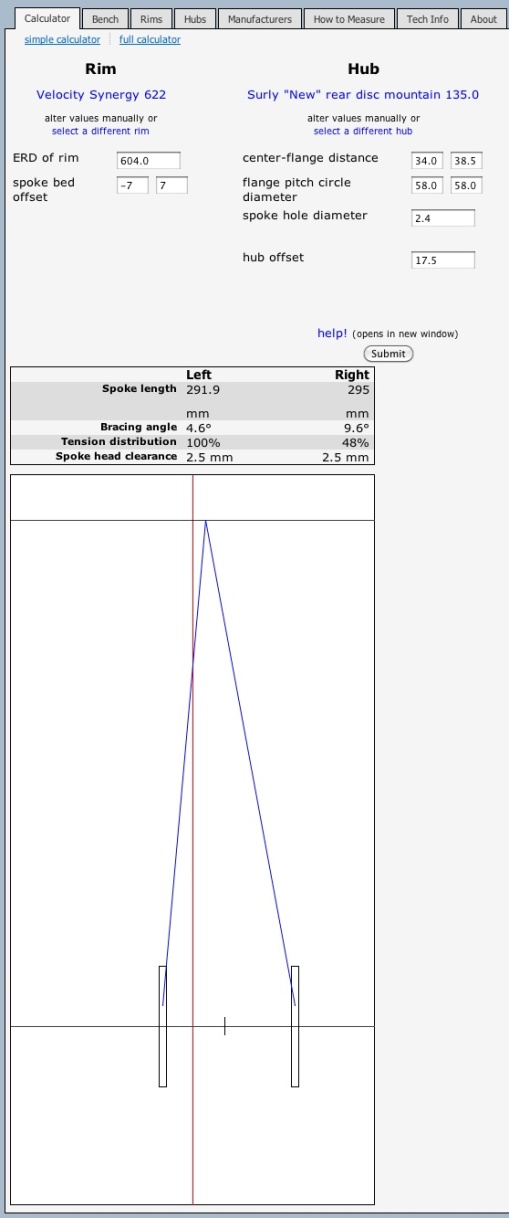
Surly SS hub in Pugs offset fork with 7mm offset rims….
Zero Offset Moonlander Fork – Zero Offset Rims

Moonlander symmetrical fork with zero offset rim…
If you have a Necromancer Pugsley you have a symmetrical Moonlander fork that takes a 135mm front hub. I don’t have the specs on Surly’s 135mm front disc hub so I used the same Surly rear hub as the other examples. It gives you a pretty good idea where things are headed although the spoke tension with the front 135mm hub may be a bit worse since the right flange doesn’t have to make room for a cog.
For a zero offset rim I got 100%/89% spoke tension which is great. You could use 4mm or 7mm offset rim to get an even stronger wheel.
Pugsley 100m Symmetrical Fork – Zero Offset Rim

100mm front hub in Surly Pugsley 100mm symmetrical fork…
Surly sells a 100mm symmetrical fork for the Pugsley at a cost of ~$99. That would allow you to use an existing standard 29er MTB wheel which you may own or can buy pre-built for a lot less than a custom wheel build. You can also swap this wheel into another MTB you own. The spoke tension is 100%/70% – which what most MTB front wheels would be.
Note this would be the same result as using a 29er suspension fork with your Pugsley.
IGH + Pugsley Offset – Zero Offset Rim

Alfine 8 in Pugsley offset frame with zero offset rim…
If you are like me and want to use an IGH with your Pugs you find out that it’s a challenge with 29er wheels. As you can see from the example above of an Alfine 8 in the rear of a Pugs with zero offset rims the spoke tension balance is poor at 100%/30%. It’s essentially the same as the tension achieved with the Surly SS hub in all the examples above so your best case using a 7mm offset Rabbit Hole rim is ~100%/50% tension balance.
Some Other Ideas
Here are some additional things to consider:
- a wider flange to flange spacing will make for a stronger more stable wheel all other things being equal
- it may be possible to drill new spoke holes on Surly Rabbit Hole rims further to the right than the stock ones
- you can use two rear cassette hubs in your Pugs to avoid the funky spoke tension you get with a SS/FG hub up front
So what should you do?
The very first thing I would do if you are going down this road is to evaluate how tough you are on wheels. That will let you know how important getting strong wheels should be to you.
- how much to do you weigh?
- how much gear do you carry?
- how rough is the terrain you ride?
- are you a finesse rider or a smasher?
- how much do you ride?
- how well do normal MTB wheels last under you?
- how much attention do you want to spend on your wheels?
Next up you need to consider some of the other factors like:
- how frequently do you plan on swapping wheels?
- how far from help do you ride?
- do you have an existing 29er front wheel you could use?
- do you want to ride narrow 29er rubber? [less than 2.4″]
- do you want to ride uber wide 3.0″ 29er rubber?
- do you want to use a suspension fork?
- what is your budget?
There is no set answer.
- The more abuse you will dish out the stronger your wheels need to be.
- If you want to swap wheels once a season a fork swap is no big deal.
- If you want to swap wheels twice a week swapping forks will get old fast.
- If you own an existing 29er front wheel you like getting a $99 Pugsley 100mm symmetrical fork is a great idea.
- If you ride far into the backcountry you won’t want to take a lot of risk.
- If you are never more than a few miles from the car you can afford to have a wheel failure.
Don’t use a Pugsley
If you haven’t got a fatbike and using a 2nd set of 29er wheels is important to you than you may well be better off buying one of the symmetrical rear end fatbikes being sold. Without the offset rear end you can build up some 29er wheels without much trouble although you will need the correct size hubs for your frame so an off the shelf 29er wheel set won’t work.
What would I do?
Well I’ve talked myself out of a 29er wheelset for my Pugs. Using an IGH doesn’t get me a good wheel build even with a Rabbit Hole rim. I don’t feel like swapping wheels and the fork every time I want to run 29er wheels either. So that sort of leaves a whole bunch of not so great options on the table.
I think the better plan for me is to have a dedicated 29er MTB and leave the Pugsley on fatbike rubber. I have a garage and I have the existing 29er parts to outfit a frame at a cost that wouldn’t be much more than a custom set of wheels.
Having said that if I was a one bike guy and owning/storing a second bike was out of the question I’d switch my Pugsley over to a 1 x 9 derailleur drivetrain and use a Moonlander fork upfront. I’d run Rabbit Hole rims because I’ll either run a 2.4″ or 3.0″ tire. I like wide rubber.
Comparison to my existing Pugsley wheels…

Alfine in Pugs with Large Marge rim…
Since we are going to town on wheel calcs the images above and below show my current Pugsley wheels. The rear Alfine has a spoke tension of 100%/92% with a Large Marge rim that has 13mm offset [same offset as Rolling Darryl rim]. The front Surly FG hub in my Pug’s offset fork has a spoke tension of 100%/69%. Both ends are pretty strong in theory and that’s backed up by a lot of abuse with zero issues.
It’s nice to be able to ride your bike as hard as you can without having to give a second thought to your wheels.

Surly SS rear hub in Pugsley offset fork with Large Marge rims…




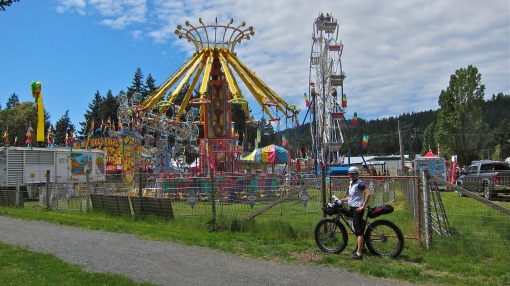


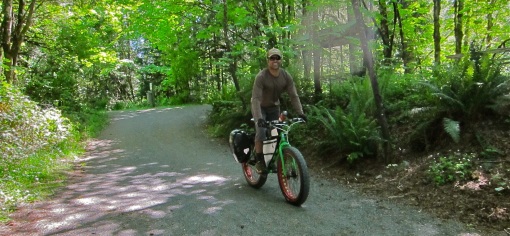


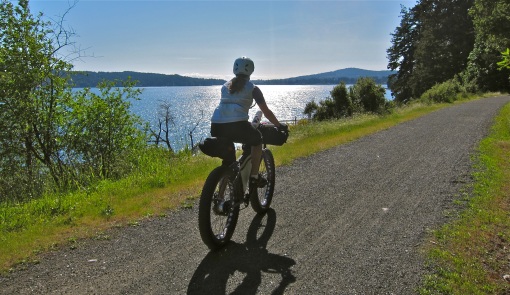
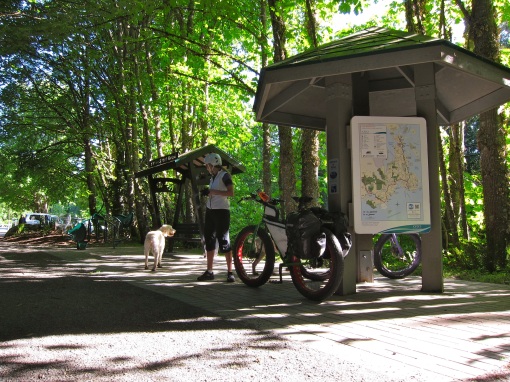



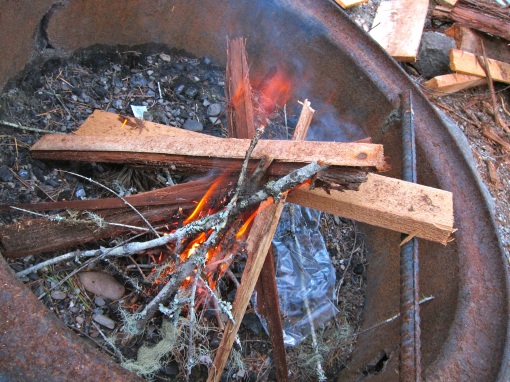






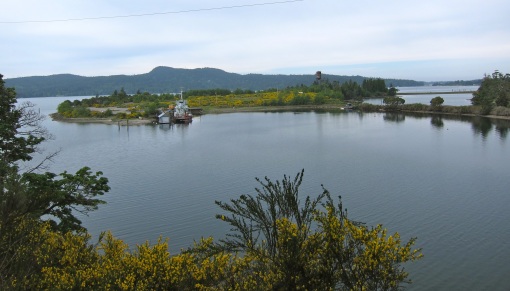
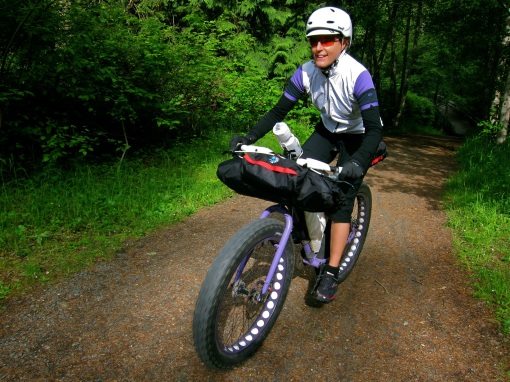
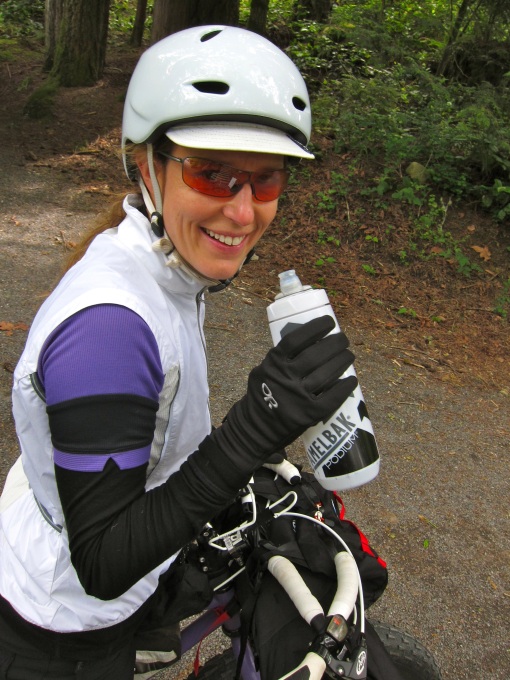

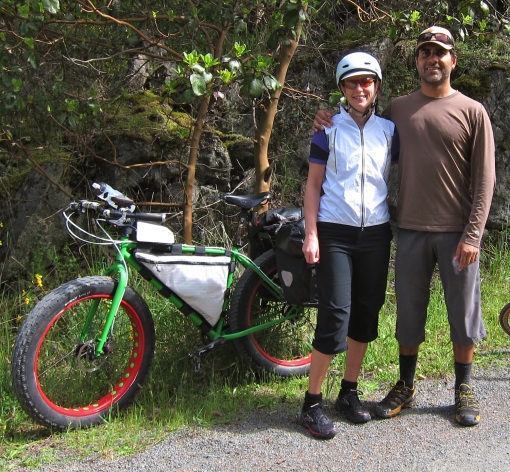











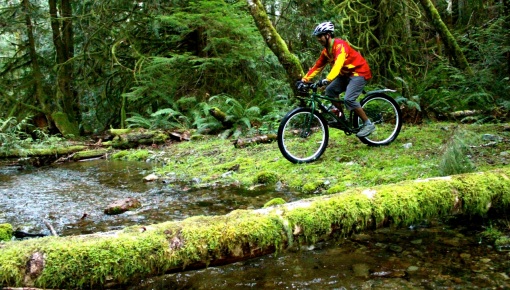

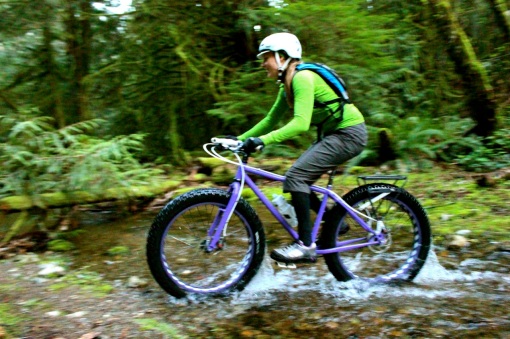









































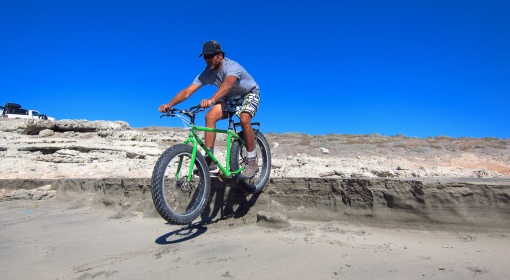










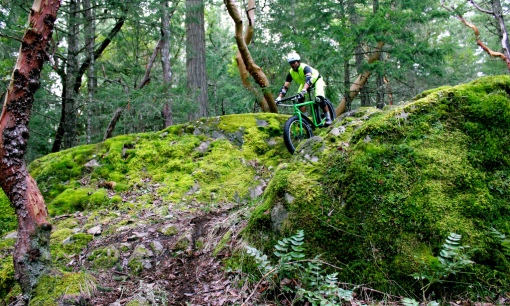












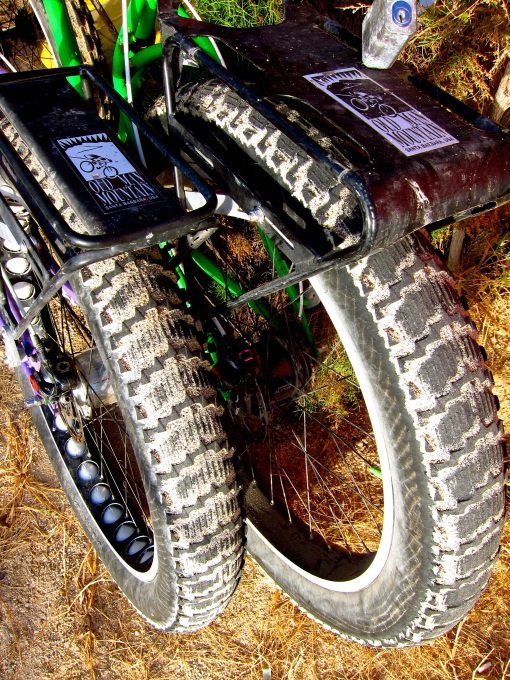


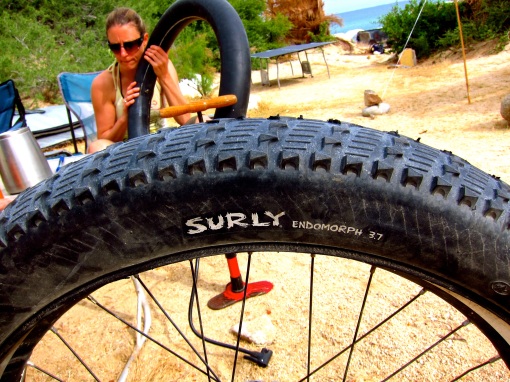























































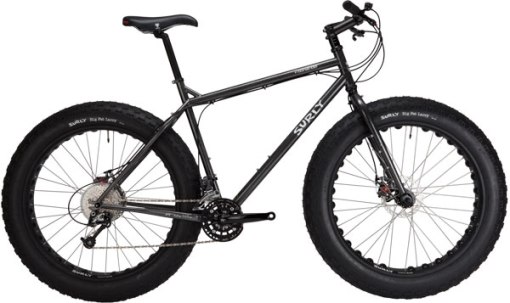
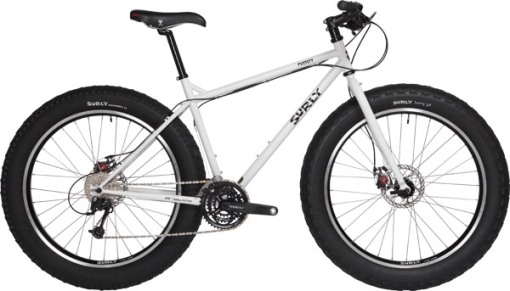
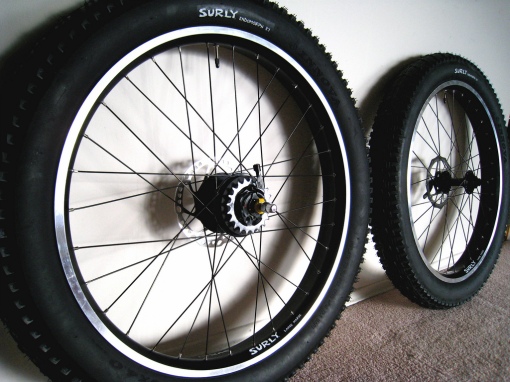



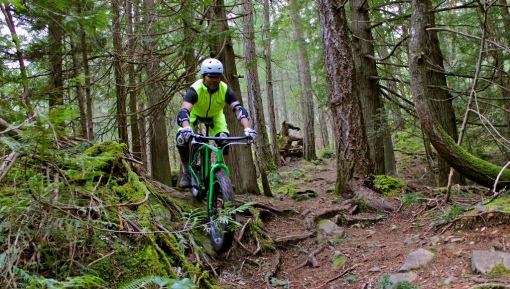
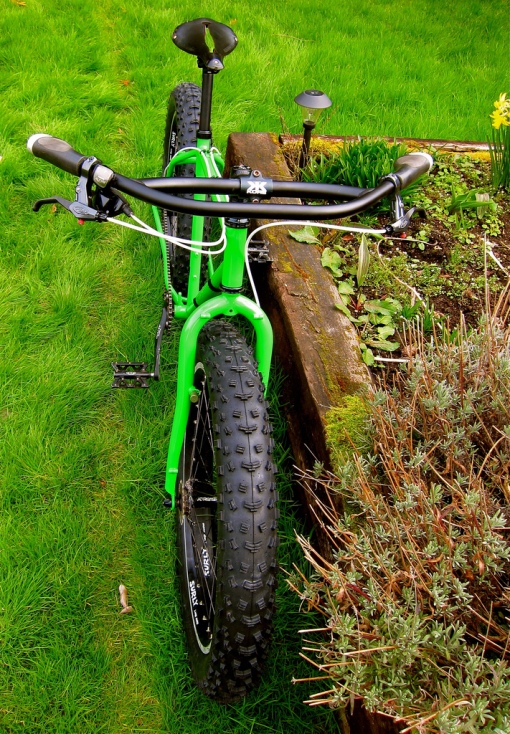
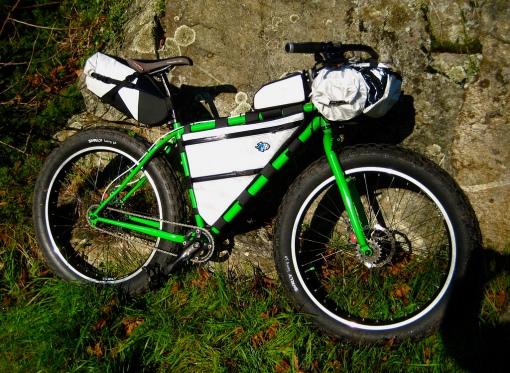


























































Recent Comments